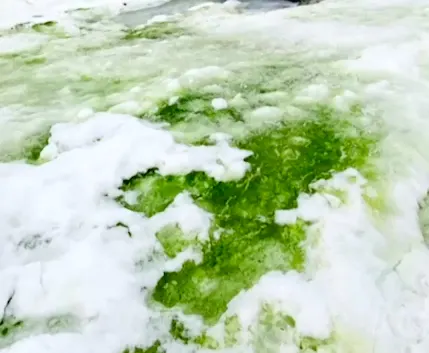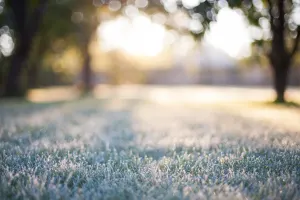
'Green snow' discovered by scientists in Antarctica
Antarctica conjures images of an unbroken white wilderness but blooms of algae are giving parts of the frozen continent an increasingly green tinge, new research has shown.
Warming temperatures are thought to be helping the formation and spread of "green snow" and it is becoming so prolific in places that it's even visible from space.
While the presence of algae in Antarctica was noted by 19th century expeditions, such as the one undertaken by British explorer Ernest Shackleton, its full extent was unknown.
Now, using data collected over two years by the European Space Agency's Sentinel 2 satellite, together with on-the-ground observations, a research team from the University of Cambridge and the British Antarctic Survey, have created the first ever map of the algae blooms along the coastline of the Antarctic Peninsula.
Published on Wednesday (May 20) in the journal Nature Communications, they say the survey is a "significant advance" in the understanding of land-based life on Antarctica.
"Now we have the baseline of where they are we can then see whether the blooms will start increasing as the models suggest in the future,” Dr Matt Davey of the University of Cambridge's Department of Plant Sciences, told Reuters.
Mosses and lichens are considered the dominant photosynthetic organisms in Antarctica -- but the new mapping found 1,679 separate algal blooms that are a key component in continent's ability to capture carbon dioxide from the atmosphere.
"In terms of the amount of carbon that is required to actually make these blooms in Antarctica, it’s equivalent to about the amount of carbon that's being emitted by 875,000 average UK petrol car journeys,” Davey said. “It seems a lot but in terms of the global carbon budget, it's insignificant.”
"It is taking up carbon from the atmosphere but it won't make any serious dent in the amount of carbon dioxide being put in the atmosphere at the moment.”
Antarctica experienced its warmest day ever recorded in February, with the mercury rising to 18.3 degrees Celsius.
Quite how rising temperatures will affect the spread of snow algae is unclear, but it is found mainly on the islands off Antarctica’s western coastline where warming has been most extreme.
"Snow algae blooms obviously they rely on slushy snow to actually bloom, so they need liquid water to actually reproduce and divide and bloom," Davey says. “If the climate gets too warm and that snow actually becomes very slushy and melts very fast you are losing the habitat for that snow algae to actually bloom in the first place. So you are wiping out a complete ecosystem in potentially one year."
Andrew Gray, lead author of the paper, and a researcher at the University of Cambridge and NERC Field Spectroscopy Facility, Edinburgh, says snow algae could potentially spread inland to higher areas.
"What we are seeing is that in the warmer parts of the peninsula, blooms are moving higher up on to local glaciers and ice caps," he said. "But I think we will probably see more coverage on smaller islands in Antarctica."
Part of the reason for that, as well as the ideal slushy snow conditions in the Antarctic summer months, is the nutrient rich excrement of the coastline's penguins and seals.
The research team found that 60 per cent of blooms were found within five kilometres of a penguin colony.
Green is not the only splash of colour in Antarctica. Researchers are now planning similar studies on red and orange algae, although that is proving harder to map from space.
(Reporting by Martyn Herman in London; Editing by Matthew Lewis)










